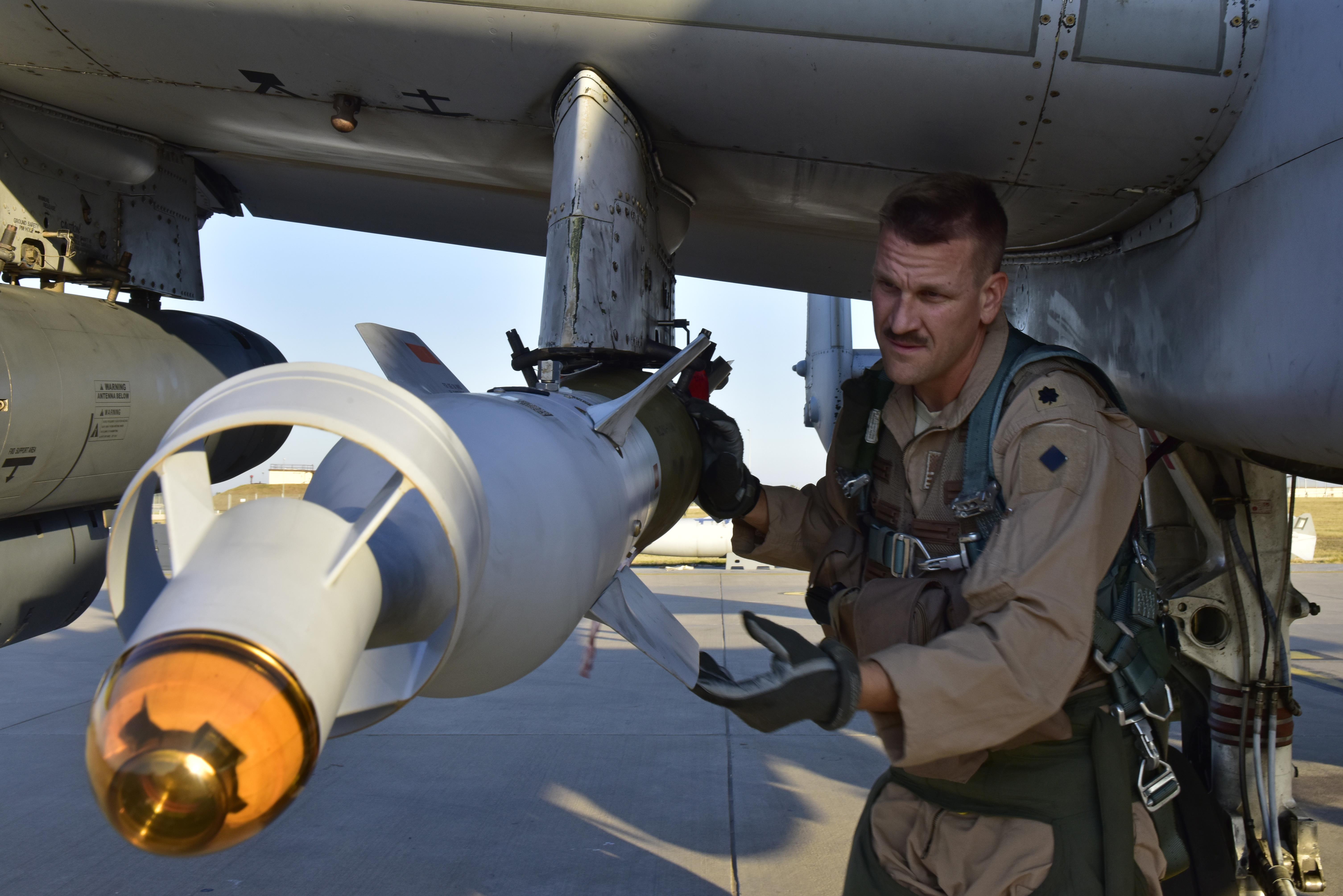
Lt. Col. Ben Rudolphi, the 407th Expeditionary Operation Support Squadron commander, conducts a preflight munitions check on an A-10 Thunderbolt II July 11, 2017, at Incirlik AB, Turkey. Rudolphi has provided a dual role in Operation Inherent Resolve as the commander of the 407th EOSS in Southwest Asia and being directly in the fight against the Islamic State of Iraq and Syria conducting A-10 flying missions with the 477th Air Expeditionary Group. Air Force photo by SrA. Ramon A. Adelan.
The 447th Air Expeditionary Group and its sister group, the 332nd Expeditionary Operations Group, played a significant role in the liberation of Raqqa, providing what the commander of the 447th AEG called “an overwhelming majority of the kinetic operations” for the fight.
The 447th AEG’s A-10s generate 10 sorties per day, and during the fight for Raqqa, they were over the city delivering close air support 20 hours a day, the group’s commander, Col. Scott Hoffman, said in a phone interview from Incirlik AB, Turkey.
“I’ll put it this way: Without the A-10s, a lot more [Syrian Democratic Forces troops] would have been killed throughout Raqqa, and ISIS would have had free reign over Raqqa for a much longer time. So, we don’t pride ourselves in the destruction that we’ve caused, we pride ourselves in the amount of lives that we have saved,” Hoffman said.
Additionally, the 447th AEG’s KC-135s generate between 12 and 16 sorties each day, “which is almost half of the tanker aircraft that are in the sky for [Operation Inherent Resolve] on any given day,” and deliver an average of 4.5 million pounds of fuel to 430 receivers per week, which is “quite extensive for one single squadron,” Hoffman said.
“Even though I know my group here is small, we really… punched above our weight,” Hoffman added.
Col. William Marshall is commander of the 332nd EOG, which is also part of the 332nd Air Expeditionary Wing. In a phone interview from the group’s undisclosed location, he said the 332nd EOG provided about 60 percent of the unmanned armed reconnaissance, flew more than 17 percent of the close air support hours, and employed more than 20 percent of the weapons for all of OIR in 2017 so far.
“It’s been a very busy summer,” said Marshall, who arrived around the time the fight for Raqqa was beginning.
The 332nd EOG has F-15s that fly close air support and defense counter-air, and MQ-9s that provide unmanned armed reconnaissance. Keeping everyone focused on the mission has been easy, Marshall said, because the airmen can see the progress.
“When we were moving through Raqqa, every week they’d brief the process of the terrain that’s been cleared, and the airmen could see that. They’d see the jets coming back without munitions, and they’d see the Reapers coming back without missiles on them or bombs on them,” and they could tie that to the fact that areas that had been red on the map “are now green, having been cleared out by our partner forces,” he explained.
Air Force Central Command spokesman Lt. Col. Damien Pickart, said AFCENT and coalition airmen “played a decisive role in the Syrian Democratic Force-led liberation of Raqqa, providing the SDF an asymmetric advantage with airpower effects, including hundreds of precision air strikes, close air support, persistent 24/7 ISR, and mobility and refueling support.”
Though the fight is now over, Marshall said the group is still busy with “what the boss is calling the annihilation phase of ISIS: To root out and destroy those last remnants.”
The focus has shifted to more defensive counter-air, he noted.
“We’ve moved down to the middle Euphrates River valley, along with our mission partners, and [are] looking to close out those last few remaining pockets,” he said.